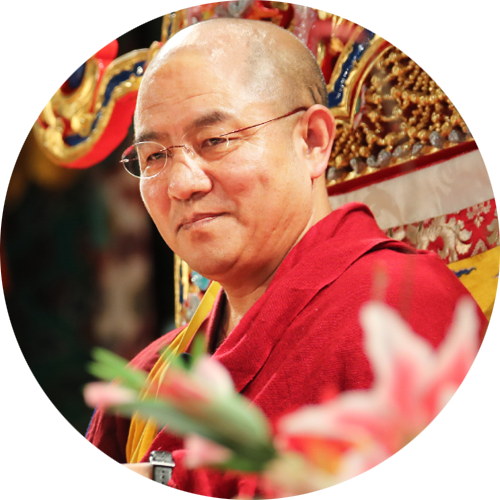92. Paramita of Wisdom III —Abiding in the State of Madhyamaka Free from All Extremes
Longchen Nyingtik Meditation 92
The Beginning
Take refuge and arouse bodhicitta.
The Main Part
Your body does not move, you don’t talk, and your mind is free of concept. The three doors of yours—body, speech, and mind—remain in stillness.
Outwardly, all phenomena—whether the sound heard, the forms seen, or else—appear to the six senses unceasingly, yet your discursive thought that reifies outer appearances is pacified; you no longer chase after it, grasp onto it, or concretize it.
Inwardly, a clear wakefulness, empty yet lucid, dawns and ousts all grasping elaborations. In between, with the body and mind having no basis to rely upon, the true nature of phenomena shines forth spontaneously. With this awareness, empty and lucid like the vast space, you abide unwaveringly in the suchness of inconceivable wisdom, in the unfabricated view of the middle way, until it dissipates. This state of concentration, with unceasing appearances, is devoid of reification, unfathomable, and indescribable; remain in it as long as you are able to.
Reminder
This is quite an advanced meditation practice, which is said to be of the highest state of prajnaparamita and the middle way; furthermore, it is recognized as the pinnacle practice in Great Perfection of revealing the primordial purity.
When all your discursive thoughts vanish and you are free from any grasping, the luminous aspect of your mind will in turn emerge. This point has been expounded in the Luminous Essence—A Guide to the Guhyagarbha Tantrathat we studied last year. Lucidity and emptiness are but different facets of the nature of the mind, which cannot be empty alone. Otherwise, its essence of lucidity—the Buddha Nature—would elude our recognition. The Zen School often speaks of “understanding the mind and seeing its nature.” What exactly does the “seeing the nature” see? The mind, in addition to being empty, is also luminous. This lucidity, of course, is nothing truly existing either.
Thus, it is especially necessary to combine the views of the Sutrayana and the Tantrayana in order to genuinely recognize the true face of the mind. If you stop short at the sutra’s level of realizing merely the mind’s emptiness without looking into the mind’s lucidity as taught in the tantra, you are following an incomplete path.
The essential nature of the mind is both appearances and emptiness, which transcends everything relative, and is beyond the description of words or concepts. Practitioners of higher caliber, by resting in equanimity and by praying to the guru, may get a glimpse of it when looking back into the mind itself. Once such a realization is attained, one understands that Buddhas and ordinary beings are not different essentially.
The Ending
Dedicate merit in a state that everything is a dreamlike illusion.
